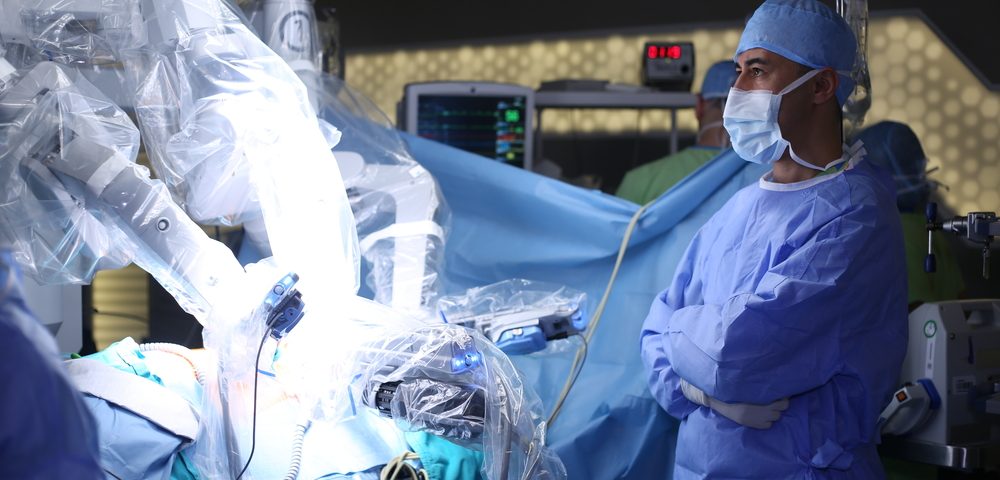Researchers at Loyola University Chicago Stritch School of Medicine found that robotic-assisted surgery to remove the prostate in obese prostate cancer patients reduces the length of hospital stays and lowers the risk of blood loss, compared to open prostatectomy.
The findings were published in Current Urology in a study titled “Open Versus Robotic Radical Prostatectomy in Obese Men.”
Prostate cancer is the most common cancer in men in the United States. A large number of patients that develop the disease choose radical prostatectomy (removal of the prostate gland and surrounding tissue) for treatment. In the past decade, robotic-assisted prostatectomy has been shown to reduce blood loss, length of stay, and peri-operative complications, and its use has surpassed that of open surgery.
Approximately 40 percent of adults in the U.S. are obese. For these patients, surgical interventions and perioperative care is often challenging because many exhibit obesity-related diseases, such as hypertension, diabetes, heart disease, and obstructive sleep apnea, that increase the risk of complications, blood transfusions, and prolonged hospital stays.
To address whether robotic-assisted surgery could benefit obese patients, the research team, led by Gopal Gupta, M.D., an assistant professor in the Department of Urology at Stritch School of Medicine, examined records from the 2009-2010 Nationwide Inpatient Sample, which included data from hospitals in 44 states, and identified obese men with prostate cancer who underwent open or robotic-assisted prostatectomy.
Of the 9,108 men who were analyzed, 60.4 percent underwent robotic-assisted surgery, and 39.6 percent underwent open prostatectomy. Although patients with morbid obesity were more likely to have complications, blood transfusions, and hospital stays, those who underwent robotic-assisted prostatectomy were 83 percent less likely to require blood transfusions, and 72 percent less likely to have prolonged hospital stays. However, robotic surgery in those patients did not decrease the risk of complications or infections.
Although robotic surgery can be safely performed in obese men and may reduce blood loss and hospital stays, both techniques are feasible and safe. For clinical experts, this will most likely indicate that the surgeon’s comfort level with either procedure should dictate the ultimate choice of surgical approach. Still, robotic surgery is often more expensive than open surgeries, and the patient’s economic situation may prove important in the decision-making process.

